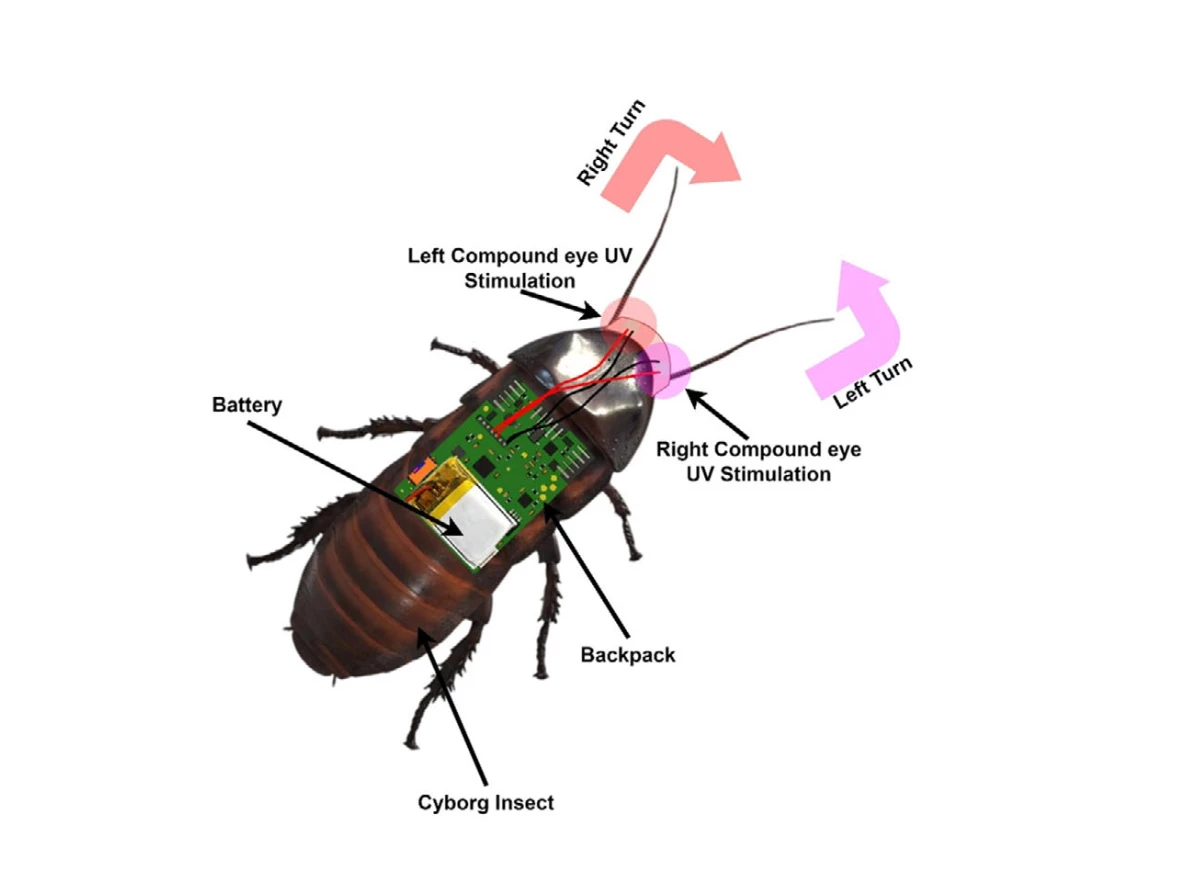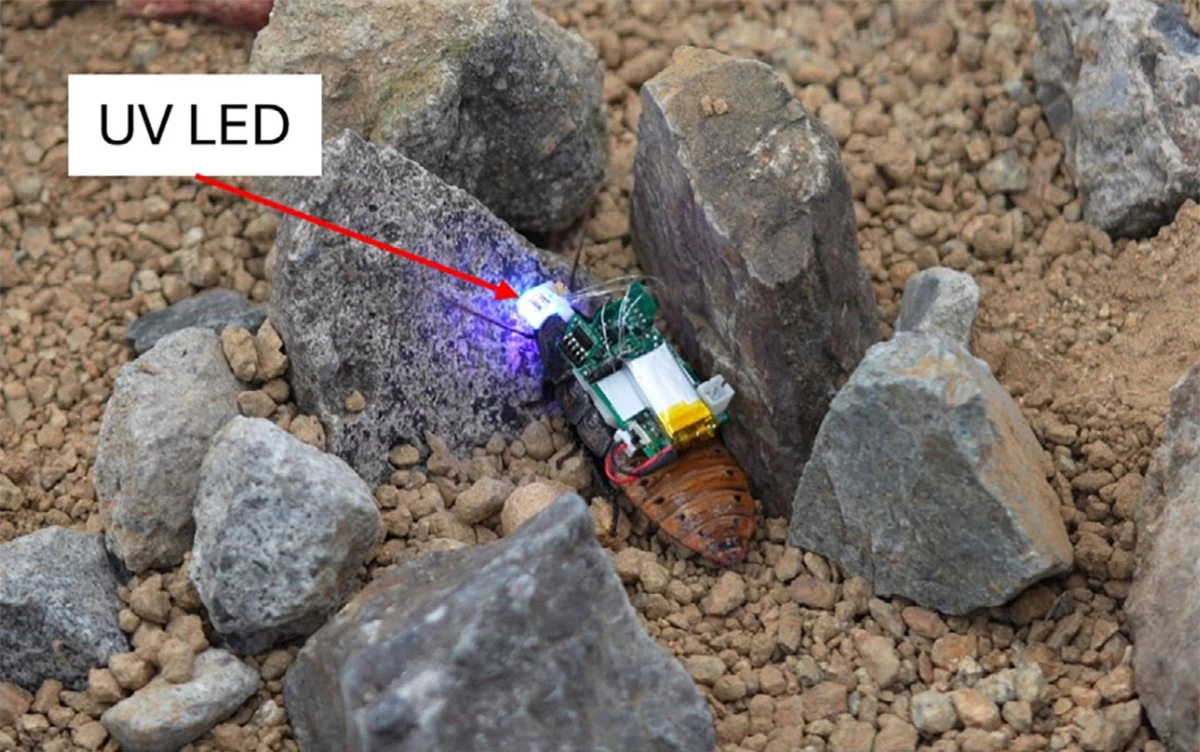I bet that headline wasn't on your bingo card this week. Researchers at the University of Osaka have equipped cyborg insects with teeny tiny helmets to steer them around various environments, without the need for invasive surgery or internal wiring.
Keisuke Morishima, who led the hybrid biology-meets-robotics study, noted that this approach to creating cyborg insects is a better way to go than traditional methods of controlling their behavior. “Instead of overriding the insect’s brain, we’re guiding it through its own senses," he explained. "That makes the system safer, more stable, and more sustainable.”
The aforementioned helmets feature small ultraviolet (UV) lights made for cockroaches. Powered by a backpack with wireless sensors that detect when the cockroach stops moving, the helmets' UV lights activate. This leverages a behavior known as negative photoaxis, where insects move away from UV light. You can watch a video of a helmet-clad bug in action over on this page.

By shining light into either eye, the researchers could steer the cockroach left or right. The team's paper, which appeared in the journal Advanced Intelligent Systems earlier this month, noted that the system worked consistently over 150 trials that saw cockroaches make their way through a maze-like environment. Some 94% of them made their way out successfully, compared to just 24% of regular helmetless cockroaches raw-dogging the labyrinth.

Beyond being less injurious to insects, this approach also avoids the drop in effectiveness of controlling bugs by zapping their nerves or muscles with electrical signals. The latter stops working after a while because the insects adapt and become used to those signals, and don't respond as expected.

This bio-hybrid system for creating controllable cyborg insects could find use in situations that are too difficult or dangerous to deploy conventional robots into, such as search and rescue missions after natural disasters, and sensitive environmental habitats that need monitoring.
This could also come in handy for sneaky surveillance operations – so the next time you spot a bug with a lid on its head, know that you're being watched.
Source: University of Osaka via AlphaGalileo




